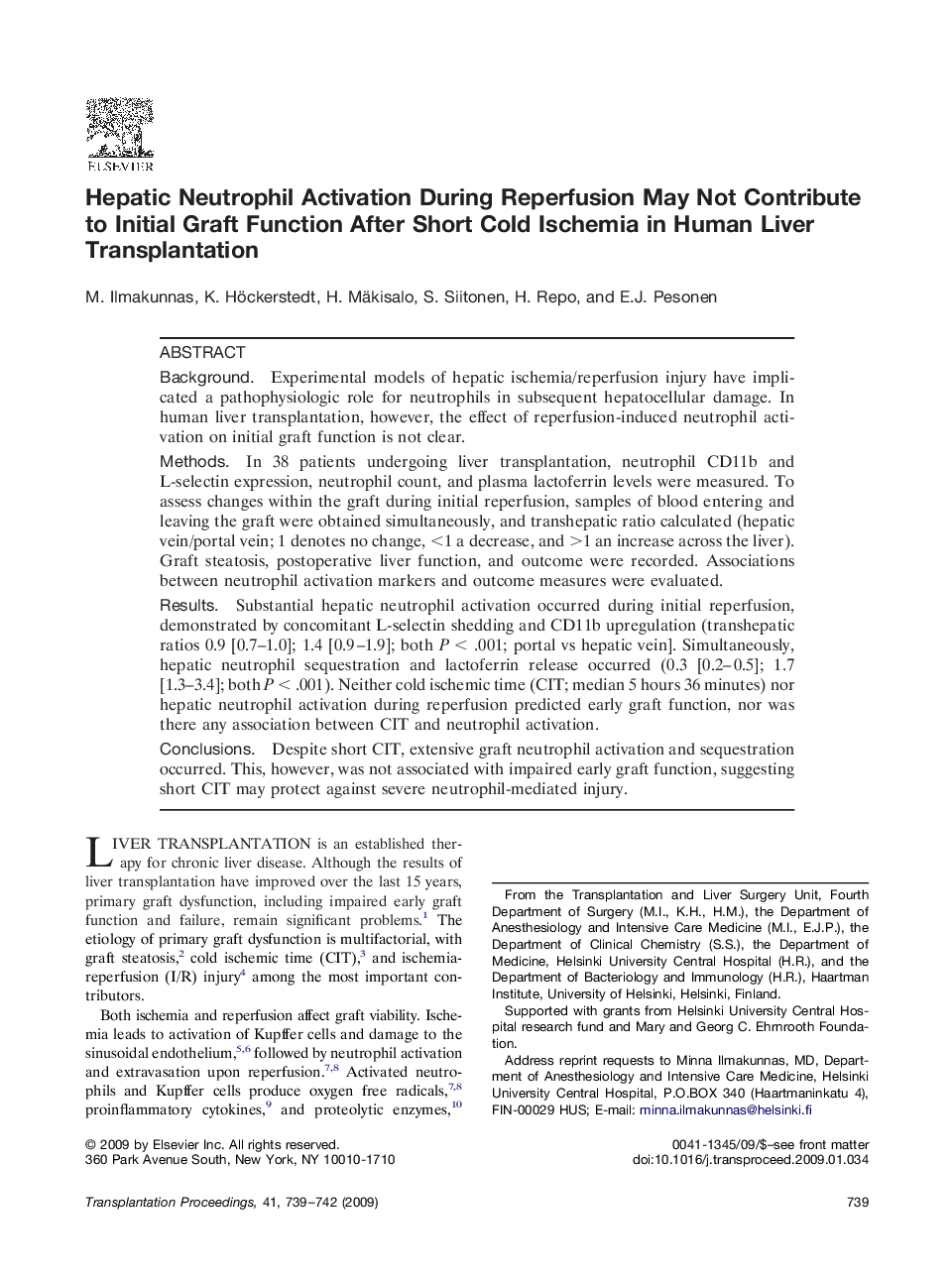| Article ID | Journal | Published Year | Pages | File Type |
|---|---|---|---|---|
| 4259562 | Transplantation Proceedings | 2009 | 4 Pages |
BackgroundExperimental models of hepatic ischemia/reperfusion injury have implicated a pathophysiologic role for neutrophils in subsequent hepatocellular damage. In human liver transplantation, however, the effect of reperfusion-induced neutrophil activation on initial graft function is not clear.MethodsIn 38 patients undergoing liver transplantation, neutrophil CD11b and L-selectin expression, neutrophil count, and plasma lactoferrin levels were measured. To assess changes within the graft during initial reperfusion, samples of blood entering and leaving the graft were obtained simultaneously, and transhepatic ratio calculated (hepatic vein/portal vein; 1 denotes no change, <1 a decrease, and >1 an increase across the liver). Graft steatosis, postoperative liver function, and outcome were recorded. Associations between neutrophil activation markers and outcome measures were evaluated.ResultsSubstantial hepatic neutrophil activation occurred during initial reperfusion, demonstrated by concomitant L-selectin shedding and CD11b upregulation (transhepatic ratios 0.9 [0.7–1.0]; 1.4 [0.9–1.9]; both P < .001; portal vs hepatic vein]. Simultaneously, hepatic neutrophil sequestration and lactoferrin release occurred (0.3 [0.2–0.5]; 1.7 [1.3–3.4]; both P < .001). Neither cold ischemic time (CIT; median 5 hours 36 minutes) nor hepatic neutrophil activation during reperfusion predicted early graft function, nor was there any association between CIT and neutrophil activation.ConclusionsDespite short CIT, extensive graft neutrophil activation and sequestration occurred. This, however, was not associated with impaired early graft function, suggesting short CIT may protect against severe neutrophil-mediated injury.
